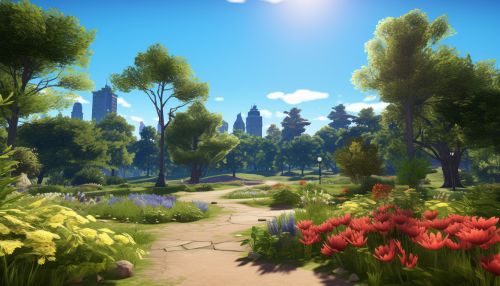The Ecology of Urban Green Spaces
Introduction
Urban green spaces, often referred to as urban ecosystems, are vital components of urban areas. They provide numerous ecosystem services and contribute to the overall health and well-being of urban residents. These spaces can include parks, gardens, street trees, green roofs, and other vegetated areas within the urban environment.
Ecological Importance of Urban Green Spaces
Urban green spaces play a crucial role in maintaining biodiversity in urban areas. They provide habitat for a variety of species, including birds, insects, and small mammals. They also serve as corridors for wildlife movement, facilitating the dispersal of species and enhancing genetic diversity.


In addition to supporting biodiversity, urban green spaces also contribute to the regulation of urban climates. They help mitigate the urban heat island effect, a phenomenon where urban areas are significantly warmer than their surrounding rural areas due to human activities. The vegetation in these spaces absorbs sunlight and releases water vapor through a process known as transpiration, cooling the surrounding air.
Social and Health Benefits
Urban green spaces are not just ecologically important; they also provide numerous social and health benefits. They offer recreational opportunities for urban residents, contributing to physical health and mental well-being. Studies have shown that exposure to green spaces can reduce stress, improve mood, and enhance cognitive function.
Furthermore, these spaces often serve as community gathering places, fostering social interactions and community cohesion. They can also contribute to the aesthetic appeal of urban areas, enhancing the quality of life for residents.
Challenges and Threats
Despite their importance, urban green spaces face numerous challenges and threats. These include urban development pressures, pollution, invasive species, and climate change. These threats can lead to the degradation of these spaces, impacting their ability to provide ecosystem services and support biodiversity.
Urban development pressures often result in the loss of green spaces, as land is converted for buildings and infrastructure. This can lead to habitat loss and fragmentation, impacting urban biodiversity.
Pollution, including air, water, and soil pollution, can also degrade urban green spaces. This can impact the health of the vegetation and the species that rely on these spaces.
Invasive species can outcompete native species, altering the composition and structure of urban green spaces. This can impact biodiversity and the provision of ecosystem services.
Climate change poses a significant threat to urban green spaces. Changes in temperature and precipitation patterns can impact the health and survival of vegetation. Extreme weather events, such as storms and heatwaves, can also damage these spaces.
Management and Conservation
The management and conservation of urban green spaces require a multifaceted approach. This includes protecting existing green spaces, creating new ones, and managing these spaces to enhance their ecological value and resilience.
Protection of existing green spaces can be achieved through land use planning and regulations. This includes zoning laws that designate certain areas as green spaces and regulations that limit the conversion of these spaces for other uses.
Creating new green spaces can involve a variety of strategies, including the greening of vacant lots, the creation of green roofs and walls, and the planting of street trees.
Management of these spaces should aim to enhance their ecological value and resilience. This can involve the use of native species in planting schemes, the management of invasive species, and the implementation of measures to enhance the resilience of these spaces to climate change.
